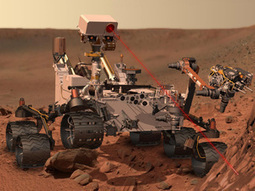Every week, THEMIS takes several hundred images of the surface of Mars, and you can see them here as they are received by mission scientists. As you watch, you'll see many kinds of geologic features scroll by. Some will look recognizable, others may be harder to figure out. To see all kinds of Martian features imaged by THEMIS, visit the THEMIS Images by Topic Gallery.
Because THEMIS images are very large and would load slowly, the images you see here have been reduced in resolution; full-resolution THEMIS images are available through the Mars Planetary Image Explorer and NASA's Planatary Data System.
Via
Dr. Stefan Gruenwald
 Your new post is loading...
Your new post is loading...
 Your new post is loading...
Your new post is loading...












